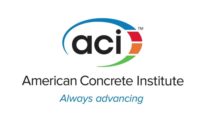A New Trend In Homebuilding Emerges: Potain Self-Erecting Tower Cranes










Self-Erecting tower cranes are changing the nature of residential homebuilding projects across North America. They reduce labor needs, do the jobs of several pieces of heavy equipment at once and dramatically increase efficiency on the jobsite. Contractors are saving thousands of dollars by switching to self-erecting cranes.
With just one self-erecting crane, homebuilders are able to build better, faster, smarter and quieter in all stages of the homebuilding process:
- Masonry: Lift masonry block pallets
- Concrete: Attach a concrete bucket for easier pouring
- Floor Joists: Set and hold floor joists into place
- Prefab Walls: Move Prefabricated wall sections
- Trusses: Hoist assembled roof trusses
- Roofing: Place shingles and roofing materials
- Hardscaping: Move hardscaping materials, from small rocks to installing a pool
Potain self-erecting cranes have proven to be the ultimate jobsite tool. These machines require fewer crew members, less total equipment on the job, and less overall labor. Only one person is needed to operate the crane via radio remote control, and they are able to place loads directly in front of them with increased visibility and efficiency.
Pinetop Custom Homes began deploying self- erecting cranes for residential projects in 2004. Based in McCall, Idaho, the company had been using a forklift to help build prefabricated houses. A colleague told owner Dusty Bitton about self- erecting cranes and their benefits, so he purchased a model from the Potain Igo range. The crane worked so well that Pinetop bought a second unit, then another, then several more, until the company had 25 self-erecting cranes in its fleet, comprising a mix of Potain Igo and Hup models.
The company uses the cranes for a variety of applications, including framing, concrete work, masonry, roofing, landscaping, setting floor joists
and windows, and material handling. In effect, the company is building entire homes with Potain self-erecting cranes.
“We are able to build houses 50 % faster with the self-erecting tower cranes than with other types of equipment,” Bitton said. “They’re also easier to get to the jobsite. They have axles underneath, so you can just pull them onto the site. They’re silent, don’t produce exhaust fumes, and with their remote-control operation, they really increase visibility, safety and precision picking.”
Bitton mentioned several other benefits self-erecting cranes have over traditional machines, like telehandlers and forklifts, for residential jobsites.
One crane, for example, can make lifts across the entire jobsite from a single location without being moved. Also, there are gains in manpower, as the same person can both operate and rig the crane, which also improves communication. And because the operator can deposit a load right in front of where they are standing, visibility and accuracy are improved. This is further aided by the remote-control operation of the cranes, which indicate
capacity, load movements, wind speeds and more.
As a testament to Pinetop’s success with self-erecting tower cranes, Bitton took his fleet of 25 Potain units and started another company, Rocky Mountain Crane, also based in McCall. The goal was to share the advances of using self-erecting tower cranes in homebuilding with other builders. It marked the first time the cranes were rented and sold in the region.
“After I bought my second self-erecting tower crane, I figured I should be selling and renting them, too. I know a lot of companies have the same challenges that I had,” he explained. “Now that word has spread about how much better this method of building is, and how much time and money it can save, I estimate there are now around 30 companies using self-erecting tower cranes on their jobsites in this region.”
Looking for a reprint of this article?
From high-res PDFs to custom plaques, order your copy today!












